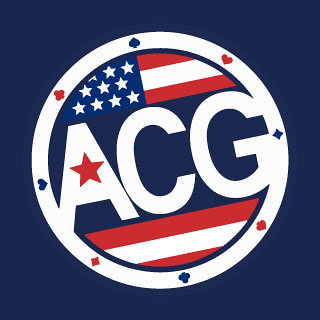With the development of digital modern features and technologies, podcast apps are emerging to meet the needs and expectations of today's tech-savvy users. Podcasts are audio programs that can be downloaded or listened to online at any convenient time with the opportunity to choose a genre and topic. Podcasts are actively gaining popularity among new trends, which is why there is a need for innovative podcast applications. Custom web app development companies can help with this as creating a podcast app can be challenging as it involves many different components. Here's a detailed guide that includes basic steps and techniques to understand the key components of creating a successful podcast app.
Planning and Conceptualization
Before you start developing an application, it is very important to create a detailed project plan outlining the architecture, features, and user experience of the application. In addition, it is important to find a reliable software development company in Vancouver to ensure that your application works at the highest level. Priority steps before starting to develop a podcast application:
- Identify the essential components and features of your podcast app. Think of essential elements like social media sharing, user profiles, search capabilities, and episode streaming.
- Identify the demographics, hobbies, and tastes of your target market. You can adapt your application to their requirements and preferences by having a thorough understanding of your users.
- Determine what distinguishes your app from other podcast applications and what makes it special and user-friendly.
Technology Stack
The development, scalability, and performance of your podcast application depend on selecting the appropriate technological stack. When developing a podcast app, you can take into account the following technological stack:
- Frontend Development. You have the option of using Swift, Objective-C, Kotlin, or Java to create your own mobile applications for iOS and Android, respectively.
- Backend Development. Select a server-side programming language to handle server-side operations and logic. Common options include Python (a general-purpose language often used with web frameworks), Java (a robust and widely used language), and PHP. Utilize frameworks and libraries to streamline backend development. For example: Ruby on Rails, Django, or Flask.
- Cloud Services. Host your backend on cloud platforms such as Amazon Web Services, Google Cloud Platform, Microsoft Azure, or Heroku.
User Interface
Your application's user interface should be simple to use and intuitive. The user-friendly design makes it simple to locate, access, and enjoy podcast material. Here are some principles to help you in the design process:
- Clear navigation. Develop an intuitive navigation system that allows users to easily move between sections of the application. Use clear labels and familiar icons for navigation items like Home, Search, Library, and Settings.
- Simplicity and minimalism. Keep the interface simple and uncluttered. Don't overwhelm users with too much information or too many options on one screen. Use easily understood icons and labels that convey their meaning without ambiguity.
- Clear visualization. Create clear content visualization to guide users' attention. Use larger text, contrasting colors, and spacing to highlight important elements such as podcast titles, episode descriptions, and action buttons.
Backend Development
Back-end development of a podcast application involves creating the back-end components and infrastructure that handle various functions such as user authentication, content management, database operations, and APIs. Here are the key aspects and steps to consider when developing the backend of your podcast app:
- Select a web framework or library that simplifies backend development. Frameworks like Express.js (Node.js), Django (Python), Ruby on Rails (Ruby), Spring Boot (Java), Laravel (PHP), or Gin (Go) can expedite development.
- Decide on the type of database you'll use to store podcast metadata, user profiles, and other application data. Options include relational databases (e.g., PostgreSQL, MySQL), NoSQL databases (e.g., MongoDB, Cassandra), or serverless databases (e.g., Firebase Realtime Database, Firestore).
- Design the RESTful or GraphQL APIs that your frontend and mobile apps will communicate with. Define clear endpoints for user registration, authentication, podcast retrieval, episode streaming, and content management.
Content Management and RSS Feeds
Develop a CMS to manage podcast content and integrate RSS feeds. Provide podcasters with an intuitive dashboard where they can log in, access their shows, and manage content. Allow podcasters to edit metadata, including episode titles, descriptions, categories, and tags. Automatically generate RSS feeds for every podcast show. These channels contain metadata about episodes, including titles, descriptions, URLs, and media locations. Include iTunes-specific tags in your RSS feed to optimize your podcast for iTunes and Apple Podcasts. These tags provide additional information such as categories, illustrations, and explicit content warnings.
Player and Playback Features
Implement a user-friendly audio player that allows users to play, pause, and control playback of podcast episodes. Turn on the audio controls to adjust the volume and playback speed. Offer a convenient scrolling feature that allows users to move forward or backward through an episode. Allow users to create playlists and episode queues to organize their listening preferences.
Subscription and User Accounts
Create a user registration and authentication system. Users should be able to create accounts, log in, and personalize their profiles. You may make a more individualized and engaging podcast app that keeps users interested and incentivizes them to frequently use your platform by offering user accounts and subscription services. When creating and maintaining your application, be sure to give user privacy and security first priority.
Testing and Quality Assurance
Test your app thoroughly for bugs, usability issues, and performance issues. Test the interaction between the frontend and backend, ensuring correct communication and functionality. Involve real users or testers to evaluate the app's user interface, usability, and overall usability.
Conclusion
Developing a podcast app is a difficult job that requires a lot of resources. Therefore, it's crucial to have a skilled development team that comprises designers, developers, and quality assurance testers. Additionally, give user experience and content quality top priority while creating your app to draw in and keep people.






